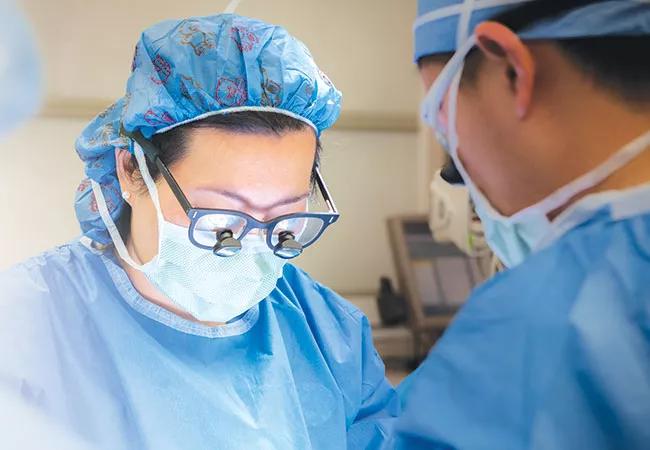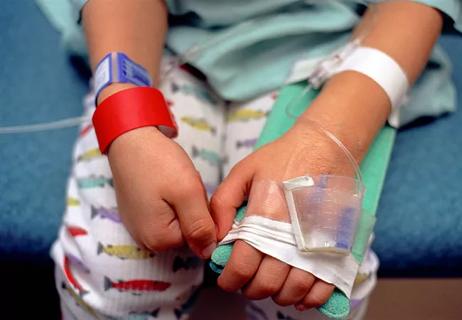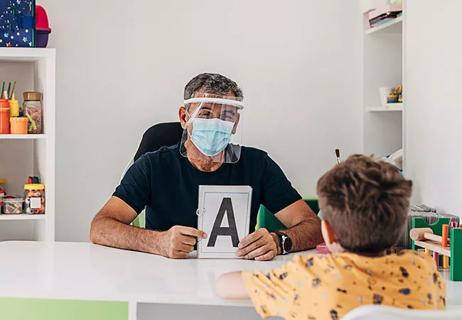Surgical and behavioral interventions for a medically complex patient

A toddler presents for follow-up evaluation with bilateral cryptorchidism, abdominal wall muscle deficiency and urinary tract abnormalities. The family recently relocated from another state, where the child was diagnosed with Eagle-Barrett syndrome in utero and underwent multiple kidney procedures. The patient has urine retention, vesicoureteral reflux and sub-optimal kidney function. What intervention is appropriate at this time?
Cleveland Clinic is a non-profit academic medical center. Advertising on our site helps support our mission. We do not endorse non-Cleveland Clinic products or services. Policy
With Eagle-Barrett syndrome, the core issue is that the ureters and bladder do not function well, which causes urine retention and kidney injury, according to Charles Kwon, MD, Director of the Center for Pediatric Nephrology at Cleveland Clinic Children’s. “Although there’s no way to restore the function of the ureters and bladder, pediatric urologists can palliate the issues, creating a system that drains as well as possible. Although this patient still had medical issues that could require future surgical intervention, he benefited from effective surgical care in his infancy. His is a very fortunate case, as we have many patients with similar diagnoses who are either on dialysis or have required kidney transplants.”
“Each intervention is unique,” says Audrey Rhee, MD, Director of the Center for Pediatric Urology at Cleveland Clinic Children’s. “When this patient came to us, his health wasn’t optimized for a major surgery. We proceeded with orchiopexy, since the testes do better when treated surgically earlier in life. However, we opted to wait for reconstructive surgery to allow the patient some time to grow, which gave the family some time to try other behavioral interventions.” Additional interventions for patients with Eagle-Barrett syndrome may include prophylactic antibiotics, timed voiding, double voiding and intermittent catheterization.
For Drs. Kwon and Rhee, the first several minutes with a family provide valuable information. “You can tell pretty quickly how engaged they are,” says Dr. Kwon. “Care for medically complex patients isn’t just about imaging and lab results. Our ultimate goal is to ensure the best possible outcomes for our patients, which takes a lot of engagement from families — and a strong support system — to provide reliable and consistent care at home. As pediatric providers, we have to support the whole family unit to get them to that goal.”
“One thing that makes our clinic unique is how well we know these families,” Dr. Rhee says. “I know mom’s first name; I know the name of her child; I know where she works. I know she’s a single mom, and that dad lives in a different state. When the patient visits his dad, there are concerns that he might not be catheterized appropriately. We [physicians] are close collaborators with each other, and with the parents, and that ensures the best possible outcomes for our patients.”
When the patient was 3 years old, Dr. Rhee led a 13-hour surgery that included reimplanting the ureters, abdominoplasty and a Mitrofanoff procedure, which would allow catheterization through the abdominal wall, bypassing the penis.
The patient tolerated the procedures well, and now, at age 10, he is poised to begin puberty, which will mean additional stress on his kidneys. “The patient is resilient. There’s no question that his kidneys have some degree of scarring, but their overall function is good and he doesn’t show signs of significant chronic kidney disease. We will need to watch him carefully over the next several years, but it’s very likely that he’ll have a good health outcome,” says Dr. Kwon.
“The mother is aware of what’s needed, and sees Dr. Kwon regularly for follow-up,” Dr. Rhee notes. Down the line, the patient may need other interventions, but this is normal for him. Mom has it down — she’s on him all the time, and he’s doing so well in large part because of her consistency.”
Aside from growth and hormonal changes, adolescence means additional challenges for patients like this.
“One of the biggest challenges will be him needing to assume the care burden from his mother. He has already begun to self-catheterize, but it can be a challenging transition for teenagers. Sometimes, parents try to delegate responsibility too quickly, or hold on for too long. This patient will need to attend to his kidney and bladder system for the rest of his life. He’ll need to catheterize indefinitely. If there’s any point at which he stopped doing that, his kidneys would take injury and the disease will progress. So, in addition to the growth and health outcomes, the psychological development necessary to embrace his own medical needs is also incredibly important and a significant potential point of failure,” Dr. Kwon continues. “Transition is a process – it takes years to prepare a child for that level of independence. We work hard to develop a transition plan for families.”
“The transition to adulthood can be further complicated by the need to transition from pediatric to adult providers,” Dr. Rhee adds. “It’s a big challenge for a lot of children’s hospitals without adult providers… They end up just holding onto congenital patients into adulthood. At Cleveland Clinic Children’s, we work very closely with engaged adult providers who we know will embrace this chronically ill young adult population. These collaborations allow for continuity of care across the entire lifespan.”

Cleveland Clinic physicians offer their insights

Increasing support for breastfeeding patients

Program has facilitated nearly 300 consults across 25 departments in less than a year

Though completely preventable, lead poisoning remains a public health threat

Differences in infection rates, management, outcomes and transmission

Helps patients visualize proper tongue placement

On the need for coordinated care